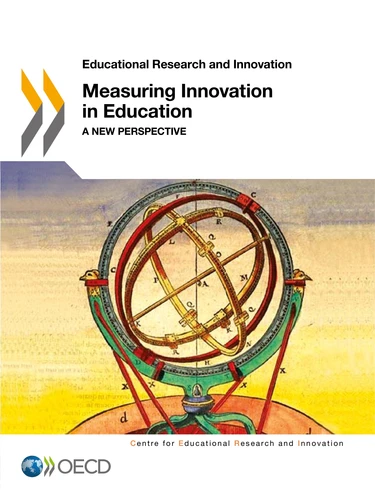Measuring Innovation in Education. A New Perspective
Par : , , ,Formats :
Disponible dans votre compte client Decitre ou Furet du Nord dès validation de votre commande. Le format PDF est :
- Compatible avec une lecture sur My Vivlio (smartphone, tablette, ordinateur)
- Compatible avec une lecture sur liseuses Vivlio
- Pour les liseuses autres que Vivlio, vous devez utiliser le logiciel Adobe Digital Edition. Non compatible avec la lecture sur les liseuses Kindle, Remarkable et Sony
 , qui est-ce ?
, qui est-ce ?Notre partenaire de plateforme de lecture numérique où vous retrouverez l'ensemble de vos ebooks gratuitement
Pour en savoir plus sur nos ebooks, consultez notre aide en ligne ici
- Nombre de pages332
- FormatPDF
- ISBN978-92-64-21569-6
- EAN9789264215696
- Date de parution17/07/2014
- Copier Coller01 page(s) autorisée(s)
- Protection num.Digital Watermarking
- Taille3 Mo
- Transferts max.Autorisé
- Infos supplémentairesPDF avec Watermark
- ÉditeurOECD
Résumé
Do teachers innovate? Do they try different pedagogical approaches? Are practices within classrooms and educational organisations changing? And to what extent can change be linked to improvements? A measurement agenda is essential to an innovation and improvement strategy in education. Measuring Innovation in Educationoffers new perspectives on addressing the need for such measurement.
This book's first objective is informative: it gives readers new international comparative information about innovation in education compared to other sectors.
And it documents change in a variety of dimensions of school practices between 1999 and 2011. Its second objective is methodological: it assesses two approaches to capturing the extent and type of innovation occurring within and across education systems. The third objective is exploratory: this book showcases a large-scale pilot that presents over 200 measures of innovation in education using existing international data.
Last but not least, the fourth objective is prospective: this report proposes new approaches to measuring innovation in education in the future. This book is the beginning of a new journey: it calls for innovations in the field of measurement - and not just of education.
And it documents change in a variety of dimensions of school practices between 1999 and 2011. Its second objective is methodological: it assesses two approaches to capturing the extent and type of innovation occurring within and across education systems. The third objective is exploratory: this book showcases a large-scale pilot that presents over 200 measures of innovation in education using existing international data.
Last but not least, the fourth objective is prospective: this report proposes new approaches to measuring innovation in education in the future. This book is the beginning of a new journey: it calls for innovations in the field of measurement - and not just of education.
Do teachers innovate? Do they try different pedagogical approaches? Are practices within classrooms and educational organisations changing? And to what extent can change be linked to improvements? A measurement agenda is essential to an innovation and improvement strategy in education. Measuring Innovation in Educationoffers new perspectives on addressing the need for such measurement.
This book's first objective is informative: it gives readers new international comparative information about innovation in education compared to other sectors.
And it documents change in a variety of dimensions of school practices between 1999 and 2011. Its second objective is methodological: it assesses two approaches to capturing the extent and type of innovation occurring within and across education systems. The third objective is exploratory: this book showcases a large-scale pilot that presents over 200 measures of innovation in education using existing international data.
Last but not least, the fourth objective is prospective: this report proposes new approaches to measuring innovation in education in the future. This book is the beginning of a new journey: it calls for innovations in the field of measurement - and not just of education.
And it documents change in a variety of dimensions of school practices between 1999 and 2011. Its second objective is methodological: it assesses two approaches to capturing the extent and type of innovation occurring within and across education systems. The third objective is exploratory: this book showcases a large-scale pilot that presents over 200 measures of innovation in education using existing international data.
Last but not least, the fourth objective is prospective: this report proposes new approaches to measuring innovation in education in the future. This book is the beginning of a new journey: it calls for innovations in the field of measurement - and not just of education.




